THIS WEEK we discuss the hot topic of Tweed Shire water security including the Clarrie Hall Dam wall raising and proposed Byrrill Creek Dam.
The subject has been raised by several readers and remains one of the Tweed’s biggest areas of concern.
Questions:
1. Firstly, could each candidate please outline whether they believe in the proposed Clarrie Hall Dam raising or proposed Byrrill Creek Dam
construction? If you believe neither please also specify?
2. Why do you believe this method is the best approach?
3. Finally, are there any other solutions to Tweed’s water supply?

Councillor Carolyn Byrne
“Last year I had a Notice of Motion on the table to explore all the water security options. Unfortunately, that comprehensive motion was not debated due to the Mayor bringing forward a Mayoral Minute to raise the Clarrie Hall Dam wall. The Greens Mayor brought forward a motion to increase the dam capacity. I believe, that we need an adult conversation about all water options, we need to lift the moratorium on Byrrill Creek, so land owners and council can negotiate land options, we need to explore the options of linking to South East Queensland Water and also Gold Coast Water and put all the information on the table for the community to consider. We also need to explore other options, such as recycling of water and water tanks. Regardless of what we do, the population is increasing in this Shire and we need the infrastructure to support this situation.”
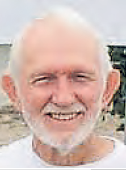
“The dam issue – subject to a study independent of Council into all options for water supply including grey water reticulation and storm water harvesting, I’m going for Clarrie Hall – same result, half the price.”
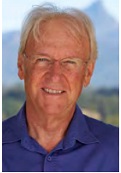
Councillor Barry Longland
“I believe that the upgrade of the Clarrie Hall dam is the sensible option for future water security for
Tweed residents. This was adopted by the outgoing Council as the preferred option and preliminary work continues with its implementation.
Studies of supply and demand indicate that the yield delivered by the upgraded CH dam is equivalent to that of the larger Byrrill Creek dam but at a much lower cost in terms of dollars and environmental impact.
Three independent studies over recent years have reached the same conclusion, with predictions indicating that supply and demand will intersect in 2026. This allows for the impacts of climate change and the continuing success of demand management measures. Some of the more extreme proponents of a no dams option point to greater use of recycled effluent and rain water tanks as being the answer to our water security. I think this is reckless and short term thinking on an issue that will significantly impact on future generations.”
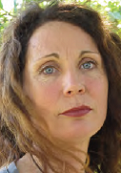
“I have read the 2015 Tweed Shire Water Supply Augmentation Report from 2015 where experts examined 5 alternate options for augmenting water supply. It reports that raising the Clarrie Hall dam by 8.5metres was identified as the best option, it would cost ratepayers $43.5 million and provide water security until 2046, Byrrill Creek dam was identified as the worst option, costed at $82M and providing water security to 2044.
So Byrrill creek is going to cost nearly twice as much, for less water security, so it seems pretty black and white. I have since talked to farmers who will be directly impacted by the Clarrie Hall dam and they advised there are also issues with this option, so we need to look at what can be done to mitigate these. I would be interested to read any subsequent studies done since 2015 on these options and make an informed decision.
We do need to examine this issue closely as we only have water security to 2026 with the current model.
Requiring rainwater tanks in all new residential greenfield development is a way of slowing demand on our water supplies that I think needs to be introduced either way.”

“I support the raising of Clarrie Hall Dam. I would never deny the people of the Tweed an increase in their secure yield water supply.
Raise CHD and leave the discussion over the BCD site for the future. Clarrie Hall Dam was built to be augmented. The CHD site is the best from a social/environmental/ economic/governance stand and the reports produced acknowledge that fact. It will service our needs well into 2046 and possibly beyond, and you don’t build beyond your capacity to purchase/pay down loans. I Support the TSC Integrated Water Cycle Management Strategy and the Water Supply Demand Management Strategy. Water tanks are a fantastic action, (have one myself) however, you can be guaranteed that; if there is no rain to fill CHD or any other catchment area, there won’t be any filling of all those tanks either. Our own ability to selfmanage consumption of water.”

“I believe in Byrrill creek as the best option for our water supply put simply it is a standalone option which does not require pipeline connection to Qld. Topping Clarrie Hall dam means it has to be lowered first for construction and we will still be short of water by 2035. It is also surrounded by active farmers and is not a clean catchment whereas council owns the land where Byrrill creek dam would sit.
Recycled water is the answer but I for one would rather drink the great quality water we are presently enjoying”
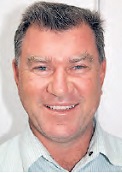
“Water is our most valuable asset. The ability for Council to guarantee supply is one of the most critical decisions it will make. But before we tackle supply I’d like us to tackle use. I’d like to see the best water saving strategies engaged by Council and residents alike. More dams or bigger dams will still be emptied by poor water practises.
We must recognise increased water supply is required to cater for our growing region.
I’d like to think that we could look long term at not just guaranteeing supply for 20 years but maybe 50 years.
Council has done a number of studies that point to the raising of Clarrie Hall Dam as the most cost effective solution to meet water needs until 2046. If that’s the case, I’d support that decision – but in my mind 30 years is still short term. Hopefully my children will still be living in the Tweed region in 30 years and I’d like to think their water supply is guaranteed as well. So where does that leave us? The building of a second dam seems inevitable. Are we just leaving the decision to the next generation to argue over as we are?”

“Ensuring water security for the Tweed is too important to leave to what people believe. We need evidence-based decision making.
Every investigation and assessment that has been done has ranked the Byrrill Creek Dam as the worst, riskiest, least attractive option available. Yet, we still have some pushing for a 30-year-old business plan, that has never been reviewed or updated, for a dam on Byrrill Creek. Before we commit to spend $50 – 100 million dollars on either dam option, ratepayers are entitled to know that it is the best, most cost-effective and environmentally sensitive option. The alternative is that we rush in now, spend up to $100 million and then spend another $50 million in the future fixing up the problems.
We need evidence-based decision making, based on the latest information, through a genuinely independent assessment of our needs and the potential strategies for meeting those needs, including strategies for managing
demand. Estimated cost is $150,00 to $200,000 with a very short turn-around time.”

“There is a lot of misinformation, confusion and contention on this subject in the community. If elected one of my first priorities is to coalesce all of the data, the Council has gathered and present all of the facts to the community in a number of public forums at local community halls over a two-week period. I would then take the decision made by the community and represent their voice with their vote. Having candidates say “I said back then and I will not change” just shows an element of ‘I will go with what I think and not consider that needs and situations change over time’.
One issue that has yet to be mentioned to me is the opportunity for tourism and recreation with a second dam, managed properly it could be an awesome asset for the community.”
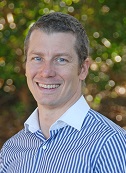
“We note the requirement to augment the Tweed District Water Supply by 2026 and the recommendation in Council’s ‘Water Supply Augmentation – Selection of Preferred Option’ to raise the Clarrie Hall Dam.
- We will advocate for a financially responsible solution that ensures we secure Tweed’s water yield at the lowest possible cost to ratepayers and businesses with minimum environmental impact and to ensure continued growth and jobs for the Shire.
- We will request a detailed briefing from Council on the report and recommendations and consult widely with other stakeholders to ensure we have a comprehensive understanding of the options available
- Work with fellow Councillors to resolve Tweeds Water security strategy as soon as possible.”

“The future of the Tweed’s water supply is paramount to its growth, development and future. Whether the right direction is to raise the wall of the Clarrie Hall dam or build a new dam at Byrill Creek, I am yet to completely decide. What I do know is that we need to have a plan for the future and to implement this plan I believe that extensive consultation will need to take place with residents, and all key stakeholders, to ensure that the right decision and direction is taken. It is about creating dialogue and it is about creating a solution that works for everyone. I am however convinced that something needs to be done as the Tweed continues to grow at a rapid pace and water security and supply is critical to all.
Solutions for the Tweed, other than dams, would be the addition and inclusion of tanks for water storage, and water saving devices, in both existing and new residential and commercial properties. Wastewater treatment and reuse, otherwise known as recycling or reclamation, for things such as irrigation, industrial processes, fire protection and toilet flushing would be a step towards creating a sustainable water supply for the Tweed Shire.”

“Building of the dam at Byrrill Creek has been unnecessarily obstructed by the influence on Council of ALP, Greens and Nationals and their disagreements. Councillors were elected in 2012 to get on with the job but – a big nothing after 4 years. Clarrie Hall dam reaches capacity demand in 10 years. Tweed Shire population is growing. A new dam will be 10 years in the planning and building process. Council currently owns 98 per cent of the land required. There’s no point in waiting; simple economics of planning and construction costs determine this. Raising Clarrie Hall is not the answer. This will be more expensive in the long run – an $11 million to acquire the land on top of the other costs – and it will destroy a similar area of natural environment as in the building of Byrrill Creek Dam. Clarrie Hall is also surrounded by productive farming land, unlike Byrrill Creek. Byrrill Creek dam must go forward; it’s the only sensible solution.

“Tweed Labor stands with the majority of Tweed residents in opposing the National Party’s push to dam Byrrill Creek. Imposing a mega dam on that waterway would destroy much of our precious environment and leave the Tweed Council penniless. This shear madness would see locals paying higher rates and soaring council fees as the shire attempts to pay off the crippling costs associated with any Byrrill Creek Dam. Tweed Labor supports a sensible course of action towards securing and sustaining our local water supply through employing new technology and listening to the science. Labor’s way is the only way to keep rates low and affordable, while protecting our natural waterways for future generations.”
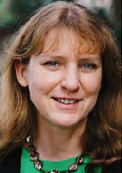
“Dams are very environmentally destructive for our waterways. They fester with water weeds and poisonous blue green algae, and block water flows that our rivers, oceans and marine life have adapted to over millions of years.
For eight long years I have called for an independent review by a specialist in sustainable water management to see if we could avoid expanding the Clarrie Hall dam. (Byrrill Creek is out of the question, and would never survive a court challenge).
I came to an agreement with Cr Longland recently to progress this sustainability review, and at the same time proceed with the planning processes for the Clarrie Hall Dam expansion to have this process sorted regardless of the outcome of the review.
Cr Longland reneged on his part of our compromise though, now claiming we already had a review. That is utter rubbish. We have never had a review of the detailed strategy, only the broad screening strategy which was not by a sustainability expert.
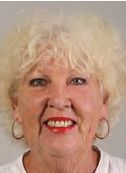
“Why are we using drinking water to flush our toilets? That is a disgrace! The issue of water supply is not isolated – it is linked to water demand management.
While we continue to use our best drinking water to flush our toilets and hose our driveways we will be under constant pressure to dam valley after valley until the Tweed disappears under a sea of house roofs and dams.
We need to actively consider, and implement, water reticulation, stormwater harvesting and other strategies to save our precious water if we are to appropriately manage supplying our water needs.
How many valleys do we have to dam before we stop and consider how we use the water that we have?
I don’t support either dam option. We have to “get real” and consider the whole range of possible strategies to collect water and to manage how we use water.
Solar powered desalination (don’t confuse it with the diesel plant in Sydney), for example, is now a viable option economically. Let’s think outside the box.”



